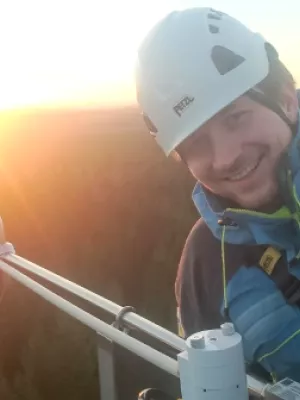
Michal Heliasz
Research engineer

Monitoring the Multi-Year Carbon Balance of a Subarctic Palsa Mire with Micrometeorological Techniques
Author
Summary, in English
This article reports a dataset on 8 years of monitoring carbon fluxes in a subarctic palsa mire based on micrometeorological eddy covariance measurements. The mire is a complex with wet minerotrophic areas and elevated dry palsa as well as intermediate sub-ecosystems. The measurements document primarily the emission originating from the wet parts of the mire dominated by a rather homogenous cover of Eriophorum angustifolium. The CO2/CH4 flux measurements performed during the years 2001-2008 showed that the areas represented in the measurements were a relatively stable sink of carbon with an average annual rate of uptake amounting to on average -46 g C m(-2) y(-1) including an equally stable loss through CH4 emissions (18-22 g CH4-C m(-2) y(-1)). This consistent carbon sink combined with substantial CH4 emissions is most likely what is to be expected as the permafrost under palsa mires degrades in response to climate warming.
Department/s
- Dept of Physical Geography and Ecosystem Science
- MERGE: ModElling the Regional and Global Earth system
- BECC: Biodiversity and Ecosystem services in a Changing Climate
Publishing year
2012
Language
English
Pages
207-217
Publication/Series
Ambio: a Journal of Human Environment
Volume
41
Document type
Journal article
Publisher
Springer
Topic
- Physical Geography
Keywords
- Carbon cycling
- Subarctic mire
- Permafrost
- Land-atmosphere exchange
- Climate change
Status
Published
ISBN/ISSN/Other
- ISSN: 0044-7447